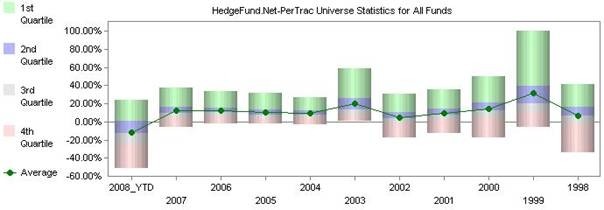A The Original Hedge Fund
Post on: 11 Июль, 2015 No Comment

Investor Login
In 1949 Alfred Winslow Jones and four friends formed an investment partnership—the first hedge fund—with Jones as the Managing Partner.
Alfred Winslow Jones was more of an intellectual than an investor. He was educated at Harvard and later received a Ph.D. in Sociology from Columbia where his dissertation was turned into a published book, Life, Liberty and Property: A Story of Conflict and a Measurement of Conflicting Rights. Throughout his life he remained interested in sociology and engaged in philanthropic endeavors, particularly the alleviation of poverty in the U.S. and abroad.
Investment management was Alfred’s fifth career when he started A.W. Jones & Co. at the age of 48. Earlier in his life, he was in the Foreign Service in Berlin. and then became an observer for the Quakers in the Spanish Civil War, monitoring civilian relief efforts. During World War II he was a writer and editor for Fortune Magazine covering a variety of topics from finance, to politics, to the war effort. By 1948 he had left Fortune but was working freelance for the magazine on an article entitled “Fashions in Forecasting.” It was during the research for this piece on technical stock market analysis that he began to formulate the ideas for his fund.
The Key Insight
While Jones was interested by the technical analysis employed by market forecasters, he was not convinced of their ability to consistently predict the direction of the market. This led to his thinking about ways in which a fund could keep its capital fully invested while having a lower exposure to swings in the market.
His key insight was that a fund manager could combine two techniques: buying stocks with leverage (or margin), and selling short other stocks. Each technique was considered risky and highly speculative, but when properly combined together would result in a conservative portfolio. The realization that one could use speculative techniques to conservative ends was the most important step in forming the hedged fund. Using his knowledge of statistics from his background as a sociologist, Jones developed a measure of market and stock-specific risk to better manage the exposure of his portfolio. [Please see the section entitled “Managing a risk-adjusted portfolio” for further discussion on this.]
It is important to note that Jones referred to his fund as a “Hedged Fund” not a “Hedge Fund” because he believed that being hedged was the most important identifying characteristic. Many “hedge funds” today are unregulated investment partnerships with performance compensation structures, but some of them may not actually be hedged.
Transformation and Expansion
Not long after founding the firm, Jones began bringing other managers into the partnership to run sections of the portfolio, and he soon ceded control of stock selection to these managers. The 20% performance allocation attracted top-quality investment talent, and by allocating out sections of the portfolio Jones was able to diversify manager risk. Essentially, Jones had created an in-house fund of funds with multiple managers running portfolios under one legal entity (the limited partnership) supervised by Jones. Jones’s job changed from picking stocks, to picking stock analysts. He allocated capital among them, monitored the portfolio’s exposure, and managed the firm’s operations.
The Fund’s remarkable record during its first twelve years of operations fostered enormous growth in its assets and partners. In 1961 a second fund was created for investors with differing tax requirements. This fund was subsequently merged back into the original fund in 1970 and the name of the partnership was changed to A.W. Jones Company.














